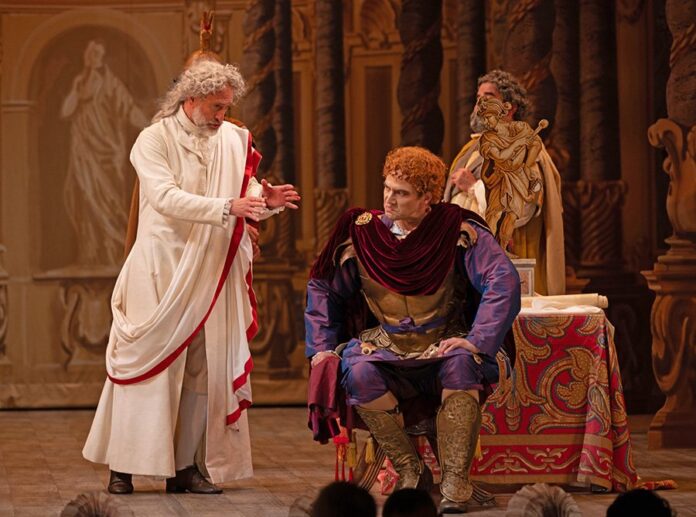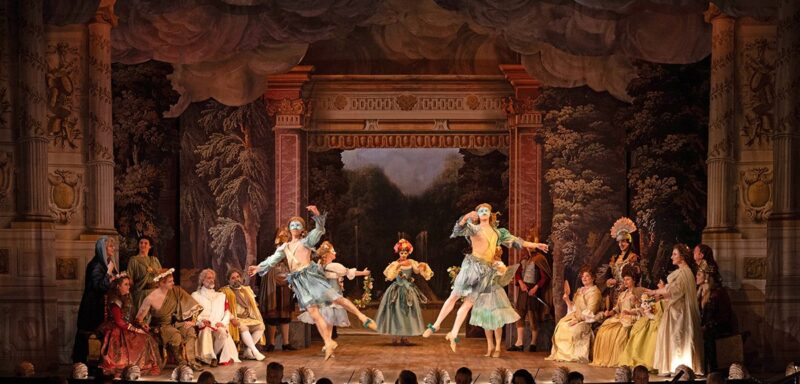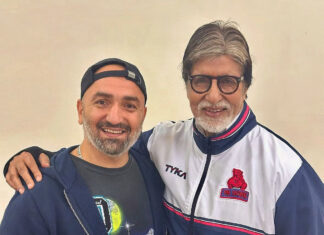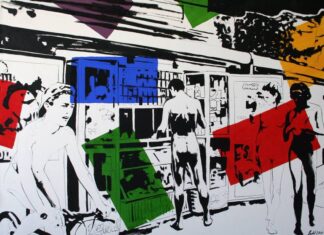BOSTON (The Boston Musical Intelligencer) — The centerpiece opera production of BEMF 2025 — Reinhard Keiser’s “Octavia” (1705) — dazzled us at the Emerson Cutler Majestic Theater on Wednesday, June 11,in its second performance of the week. This year’s operatic offering highlights a lesser-known contemporary of — but important musical influence on — Handel and Telemann. Keiser (1674-1739) held the post of main composer and later music director and business manager of the Oper am Gänsemarkt in Hamburg. His involvement in this operatic venture continued on and off from about 1697 to 1717; he was a poor business manager and often skipped town when things went south financially only to return later and resume his post. Yet, as an opera composer he was quite successful and worked with a young Handel who played violin and harpsichord in the orchestra as well as composed operas for the same theater from 1703-08. Keiser’s operas had a major impact on Handel’s operatic style prior to his trips to Italy and the younger composer would continue to borrow from Keiser’s scores throughout his career.
BEMF’s choice to program “Octavia” — a tale of love and infidelity in Nero’s Rome — shows that Keiser is not merely an inferior predecessor to Handel but also rather a compelling musical dramatist in his own right. The BEMF orchestra, dance company, and cast pulled off an exceptional feat on Wednesday night: to produce a Baroque opera by a somewhat obscure composer with an attention to historical accuracy of presentation while also creating a compelling and engaging drama.
The costumes (Anna Kjellsdotter) and sets (Alexander McCargar) replicated the 18th century’s view of ancient Rome, making clever use of moving set pieces that evoke the kind of stage machinery in vogue at the time. The beautiful and ornate costumes combined 18th-century dress with Roman togas and laurel wreaths. The troupe of 5 dancers (directed by Marie-Nathalie Lacoursière and choreographed by Hubert Hazebroucq) added a touch of spectacle in the four dance sections, at times portraying dancing fish and later ghosts attacking grave robbers. They deftly wove together 18th-century dance techniques with a modern sense of narrative to add further depth to the story.
The show brought Boston area favorites such as Amanda Forsythe, Aaron Sheehan, Richard Pittsinger, and Jason McStoots to the stage together with out-of-town guests including Hungarian soprano Emőke Baráth in the title role. Baráth in particular deserves accolades; an announcement prior to the show told us that she was feeling unwell and would be marking most of her choreography. Despite this, she persevered, singing each aria and scene with strength of voice and emotional fervor that brought the regal Octavia to life. In particular, her extended accompanied recitative in Act 2, as Octavia prepares to take her own life, displayed both sincere emotion and vocal prowess, despite her standing still centerstage for the entirety. We didn’t mind the missing stage movements.
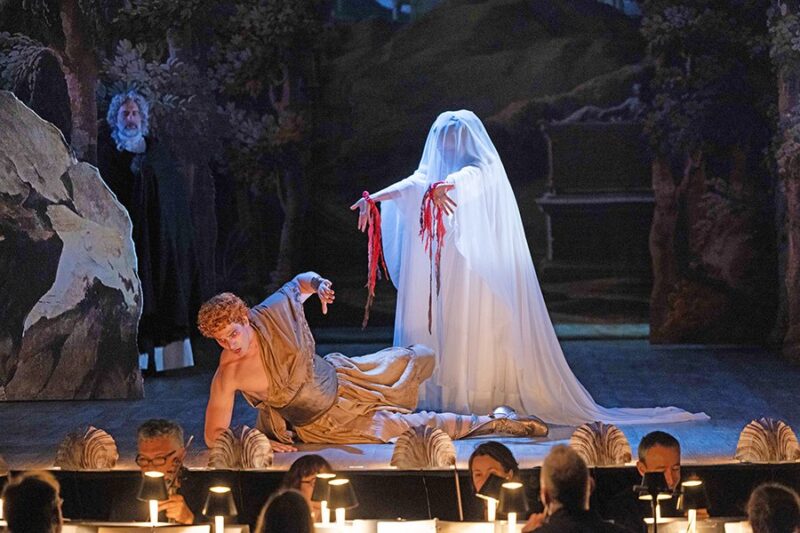
Baritone Douglas Ray Williams portrayed the capricious and inconstant emperor Nero, Octavia’s husband. He undergoes a significant character development through the opera, beginning by forsaking his wife for the Armenian queen Ormœna (Forsythe) who is herself married. He then attempts to do away with his wife by forcing her to commit suicide. Octavia is saved from this fate by Piso (Sheehan); she later appears to Nero pretending to be her own ghost. At this point, the famously insane emperor descends into madness but is brought out of it by his general Fabius’s (Pittsinger) announcement of his defeat of Piso’s rebellion (the historical Pisonian conspiracy) and the subsequent revelation that Octavia lives. Husband and wife reconcile and Nero pardons Piso, achieving the lieto fine (happy ending) expected of such operas. Williams drew us into Nero’s journey with his evocative acting and deft use of vocal shadings. When acting the imperious ruler, he drew on the full resources of his dark lower register but when driven to madness by guilt and fear of his wife’s “ghost” he displayed an impressive lightness in his upper register. In this way, Williams demonstrated the versatility of the medium-low male voice not often heard in bel canto or contemporary operatic singing.



